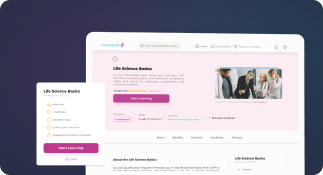Retrospective Validation
Definition
Retrospective Validation is the process of validating a system or process after it has already been implemented and is in operational use. This type of validation is typically applied to legacy systems that were not subject to formal validation at the time of their initial deployment but are now required to demonstrate GMP (Good Manufacturing Practice) compliance.
Detailed Explanation
In the pharmaceutical and life sciences industries, validation is a critical component of quality assurance and regulatory compliance. While prospective validation is performed before a system goes live, retrospective validation is conducted after the fact. It is often used for systems that were in use prior to the implementation of current validation standards or regulations.
Purpose and Importance
The main objective of retrospective validation is to ensure that systems and processes consistently produce results that meet predetermined specifications and quality attributes. This is especially important for legacy systems that have been operational for years but may not have documented validation protocols.
Regulatory bodies such as the FDA and EMA expect all systems impacting product quality to be validated, regardless of when they were implemented. Retrospective validation allows companies to bring older systems into compliance without disrupting operations.
When to Use Retrospective Validation
- For systems implemented before validation requirements were formalized.
- When documentation from initial implementation is incomplete or missing.
- To satisfy regulatory audits or inspections.
- When migrating or upgrading legacy systems.
Steps in Retrospective Validation
The process typically includes:
- Document Review: Collect and assess historical data, including batch records, maintenance logs, and deviation reports.
- System Evaluation: Evaluate the system’s current performance and reliability.
- Risk Assessment: Identify and assess risks associated with the system’s continued use.
- Validation Protocol: Develop and execute a validation protocol based on retrospective data.
- Final Report: Compile findings into a validation report demonstrating GMP compliance.
Challenges and Considerations
Retrospective validation can be complex due to the lack of original documentation or changes made to the system over time. It requires a thorough understanding of the system’s history and performance. Common challenges include:
- Incomplete or inconsistent historical data
- Changes in regulatory expectations
- Difficulty in reconstructing validation rationale
Example: Retrospective Validation of a Legacy LIMS
A pharmaceutical company using a Laboratory Information Management System (LIMS) since 2005 may not have formally validated it at the time of installation. With updated regulatory scrutiny, the company conducts retrospective validation by reviewing years of system usage, including audit trails, user access logs, and data integrity reports. A validation protocol is created to test key functionalities and confirm that the system operates as intended. The final validation report is submitted during an FDA inspection to demonstrate GMP compliance.
Relation to Other Validation Types
Retrospective validation is one of three primary types of validation:
- Prospective Validation: Conducted before the system is put into use.
- Concurrent Validation: Performed during actual production.
- Retrospective Validation: Conducted after the system has been in use.
Each type serves a specific purpose depending on the timing and regulatory context.


